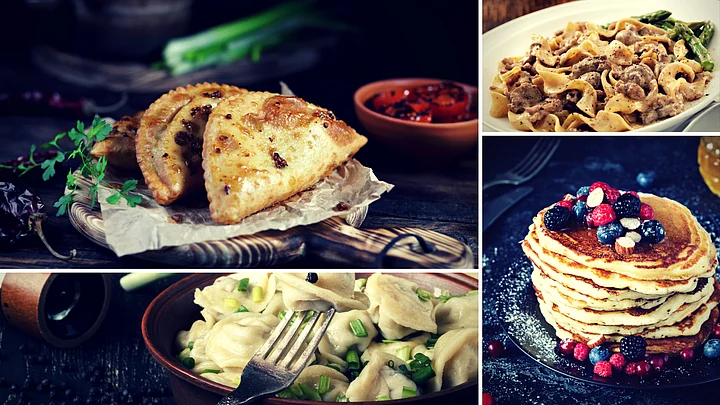Indians will love Russia. Not just because of vodka but also for its good scrumptious food, which is pretty similar to the Indian pallets. Don’t let the Russian names on the menu card fool you. No matter how complicated the name, the dish is as desi as you can get!
Russian cuisine is influenced by east European and central Asian cuisines and it draws similarities from neighbouring countries — Kazakhstan and Uzbekistan.
“An ideal breakfast consists of blini (pancakes) or porridge, lunch is plov (pulao) and dinner is shashlik (kebab),” says Julia Tuovila, a German and English teacher from Russia.
If you’re travelling to Russia, let us help you make your menu browsing simpler.
Plov
Plov, much like a non-veg pulao, is a one-pot chicken and rice recipe that is packed with flavours and spices.
Plov forms a part of the main course in Russia and is a traditional dish.
Earlier it was eaten during big events but now most restaurants serve it. It was considered to be a traditional dish of Uzbekistan, Tadzhikistan, Azerbaijan, Kazakhstan but Russians believe their version of plov is different.
It is cooked in a huge pot called ‘kazan’, where the meat and onion is sauteed and adequately spiced before rice is added. Cooked on a slow flame, the end result is a delicious dish where the meat falls off the fork and the fragrant grains of rice satiate your appetite.
Beef Stroganoff
This popular dish derives its name from the influential Stroganov family in Russia. “It was created in the 19th century in Russia for the dinner of the Earl Stroganov,” says Julia.
Beef Stroganoff is made by sauteeing strips of beef in a sauce of butter, white wine, sour cream (called ‘smetana’ in Russia), mustard and onions. Beef stroganoff is eaten as a part of mains, usually cooked for a festive meal. “It is eaten hot otherwise the succulent beef gets stuck in the sour cream sauce,” she adds.
This wholesome and hearty dish can be eaten either straight or poured over rice or noodles.
Shashlik
Russia loves shashlik and in Moscow, you will find shashlychnaya – tiny restaurants that specialise in shashlik, almost everywhere.
Shashlik is a shish kebab made by grilling chunks of meat over an open fire with herb leaves tossed in to enhance the flavour. You can use any kind of meat, but Russians prefer pork. So make sure to order your choice of meat for the shashlik. The marinade ingredients vary from red wine to vinegar to pomegranate juice.
Pirozhki
Similar to the veg and non-veg puff pastry we have in India, Russians have pirozhki, which is a pastry filled with potatoes, meat, cabbage or cheese. Pirozhki is made from yeast dough and is often glazed with egg that gives it a golden colour.
The word Pirozhki comes from the Russian word “pirog” (pie). In olden times, poor families could not afford making many dishes so they baked a pie.
Pirozhki can be sweet too. Sweet-based fillings include fruits, jam, cheese etc. “This dish makes a perfect snack and goes well with chai,”says Julia.
Blini
This is a very popular especially eaten during the Maslenitsa festival in Russia. All kinds of fillings are possible – sweet or savoury.
Blini is the safest option to pick when you don’t understand the menu.
This dish can be had for breakfast , lunch, or as a dessert too – with a dollop of maple syrup or chocolate.
Pelmeni
Pelmeni are pastry dumplings consisting of a filling of pork and meat, wrapped with unleavened dough. It is prepared as an adaptation of the Chinese wonton, brought into Siberia and the Urals by the Mongols.
Historically, pelmeni was a way of keeping meat through winter, as they could be prepared and then frozen in the snow and cold. The meat inside the pelmeni is lightly spiced with salt, pepper and garlic, and cooked inside the dough.
“This dish can be eaten for lunch or dinner. Russians like eating it with sour cream”, elaborates Julia.
(A freelance food and fashion blogger, Pranjali Bhonde Pethe aims at getting people and their favourite food and style closer through her blog moipalate. Email her at pranjali.bhonde@gmail.com and follow her on @moipalate.)
(At The Quint, we question everything. Play an active role in shaping our journalism by becoming a member today.)
